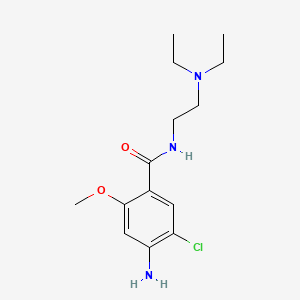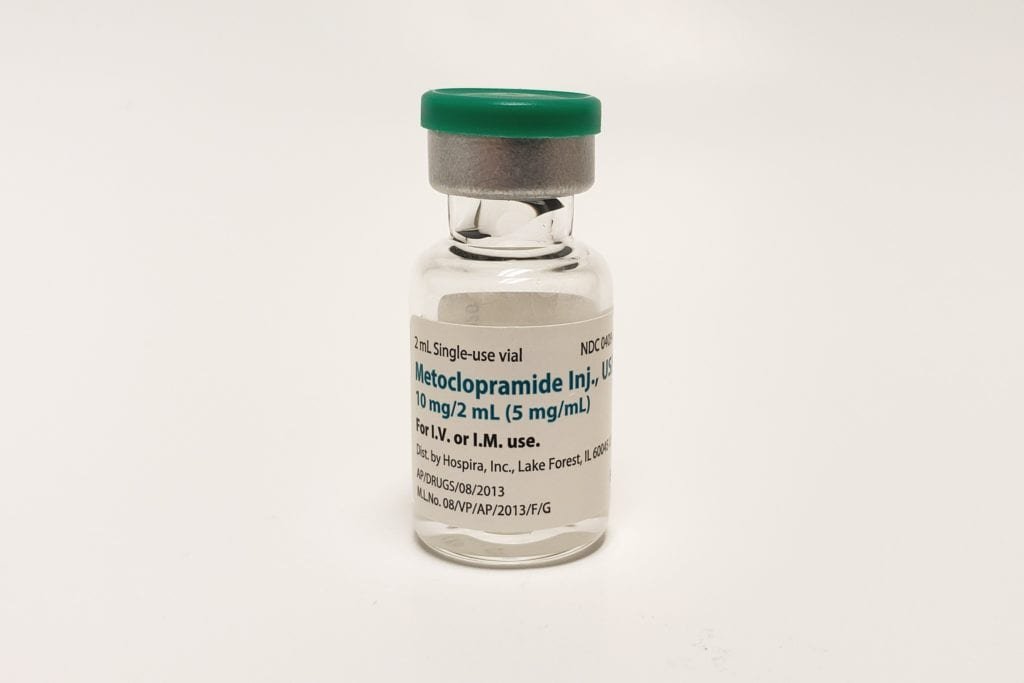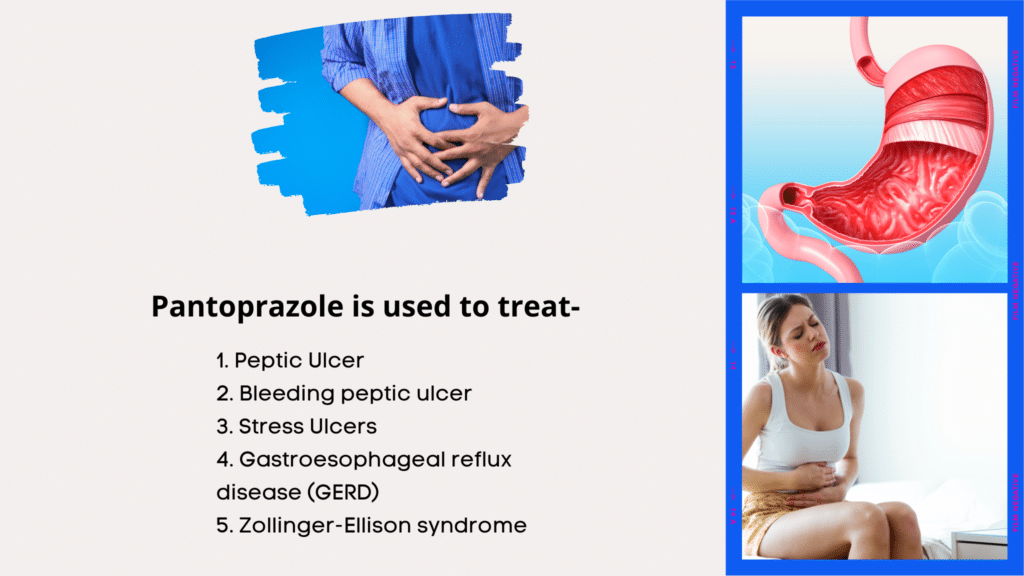Metoclopramide is an Antiemetic prescribed for nausea and vomiting. Antiemetics treat motion sickness, chemotherapy-induced nausea and vomiting, and the side effects of general anesthetics and opioid analgesics.
Few medicines act on the chemoreceptor trigger zone-CTZ (in the brain) by preventing the stimulation. The chemoreceptor trigger zone is a vomiting center. Some medications act as prokinetic agents by speeding up the rate at which the stomach empties.
Classification of Antiemetics:
- 5-HT3 receptor antagonists: Ondansetron, Granisetron, Dolasetron, etc.
- Dopamine D2-receptor antagonists act in the brain:Domperidone, Metoclopramide, Mosapride, etc.
- Antihistamines or H1- histamine receptor antagonists:Diphenhydramine, Promethazine, etc.
- Benzodiazepines: Midazolam, Lorazepam, etc.
- Anticholinergics: Scopolamine, Hyoscine, Dicyclomineetc.
- Steroids: Dexamethasone etc.
| Parameters | Description |
|---|---|
| Category of Drug | Dopamine D2-receptor antagonists |
| Mechanism of Action | Metoclopramide acts by inhibiting dopamine D2 and serotonin 5-HT3 receptors in the chemoreceptor trigger zone (CTZ), and causes antiemetic effects |
| Chemical structure |  |
| Molecular details | Molecular weight- 299.79 g/mol Molecular formula- C14H22ClN3O2 |
| IUPAC Name | 4-amino-5-chloro-N-[2-(diethylamino)ethyl]-2-methoxybenzamide |
| Indications | Metoclopramide is used for 1. Nausea and vomiting in gastrointestinal disorders and treatment with cytotoxics or radiotherapy 2. Gastro-oesophageal reflux disease 3. Gastroparesis 4. Premedication and postoperatively 5. Aid to gastrointestinal intubation |
| Pharmacokinetic Properties | 1. Rapidly absorbed in the gastrointestinal tract – 84% 2, Bioavailability of the oral preparation-40.7% 3. A 15mg dose reaches a Cmax of 41.0 ng/mL, with a Tmax of 1.25 h, and an AUC of 367 ng*h/mL.4 4. The volume of distribution – 3.5 L/kg 5. Protein binding- 30% 6. Metabolism- first-pass metabolism (metabolized by cytochrome P450 enzymes in the liver. |
| Well Known Pharmaceutical Brands | PERINORM- IPCA |
| Available dosage forms | 1. TABLETS 2. INJECTION 3. SYRUP  |
| Dose | 10 mg 3 times daily |
| Contraindications | 1. Gastrointestinal obstruction 2. Haemorrhage or perforation 3. 3-4 days after gastrointestinal surgery 4. Convulsive disorders 5. Pheochromocytoma 6. Hypersensitivity |
| Precautions | 1. Elderly, children and young adults 2. Hepatic impairment 3. Renal impairment 4. Pregnancy 5. May mask underlying disorders such as cerebral irritation 6. Gastrointestinal surgery 7. Lactation 8. Interactions 9. Parkinson’s disease 10. Epilepsy 11. Hypertension 12. Cirrhosis 13. Congestive heart failure |
| Adverse Effects | 1. Extrapyramidal symptoms 2. Tardive dyskinesias on prolonged use 3. Hyperprolactinaemia 4. Drowsiness 5. Restlessness 6. Hypotension and hypertension reported 7. Neuroleptic malignant syndrome 8. Pruritus 9. Oedema 10. Cardiac conduction abnormalities following intravenous administration |
| Pregnancy Category | B |
References







Pingback: Central Nervous System and types of antiemetics - PharmaCampus